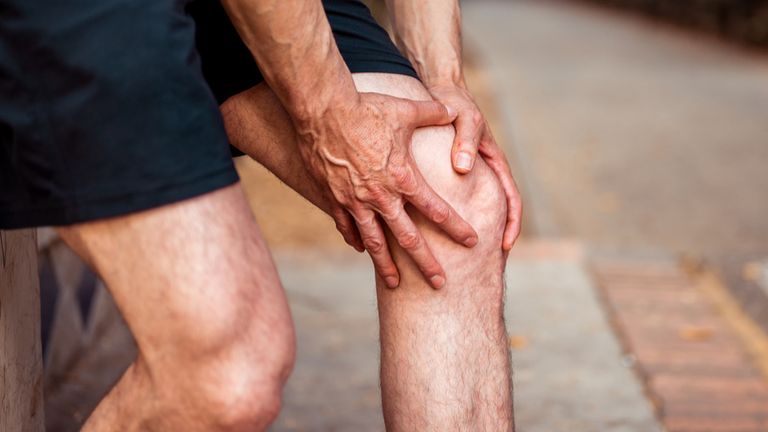A tiny knee bone linked to a common type of arthritis may have helped humans to evolve from walking on all fours to standing upright, scientists suggest.
Little is known about the lateral fabella, a bone buried in the tendon below the knee which is about the size of a sesame seed and is found in around 39% of the population.
It has been linked to conditions such as osteoarthritis, a degenerative disease that sees the tissues in the joints break down over time, causing chronic pain.
Researchers from King’s College London (KCL) have found the small bone evolved in a unique way in early humans compared with other primates such as lemurs, lorises, tarsiers and monkeys.
Dr MIchael Berthaume, reader in engineering at KCL, argues the evolutionary change may have helped in the transition from humans walking on their knuckles to standing up on two legs.
“Our study shows that this often-misunderstood bone could have evolved in multiple ways in primates, with humans having a distinct form of evolution that began right at the start of all hominoids [a group including great apes such as chimpanzees, orangutans and bonobos, as well as humans],” he said.
“Using this bone in a new way could have helped early humans, like Australopithecus, go from walking on all fours to walking upright.”
Decades of scientific research have failed to reveal why some people have the lateral fabella and others do not.
The bone is around three times more common today than a century ago, when 11% of the world’s population had it, suggesting it is making a comeback in humans.
Dr Berthaume said this may be because “over the last 100 years, people are better nourished, and therefore are taller and weigh more, providing the mechanical stimulus for the bone to form”.
Tiny knee bone missing from almost all great apes
The study, published in the journal Proceedings of the Royal Society B, also analysed the medical literature on knees involving 93 primate species.
Dr Berthaume and his colleague Nelly A Fragoso Vargas, of London South Bank University’s Division of Mechanical Engineering, looked at two other bones embedded in the tendons in the knees – the cyamella and the medial fabella.
They discovered primates with these bones were 50 times more likely to have ancestors who also had them.
They also found the lateral fabella is missing from almost all great apes, except two species of gibbons.
Meanwhile the medial and lateral fabella were found to almost always develop in pairs in primates, except humans, who only have a lateral fabella.
Dr Berthaume said the findings point towards an evolutionary process known as exaptation, where a limb or organ evolves in a particular context but over time takes on a new function.
He said understanding more about the link between why people with osteoarthritis are twice as likely to have the lateral fabella “is an avenue we are interested in pursuing and we have some hypotheses we would like to test”.



























